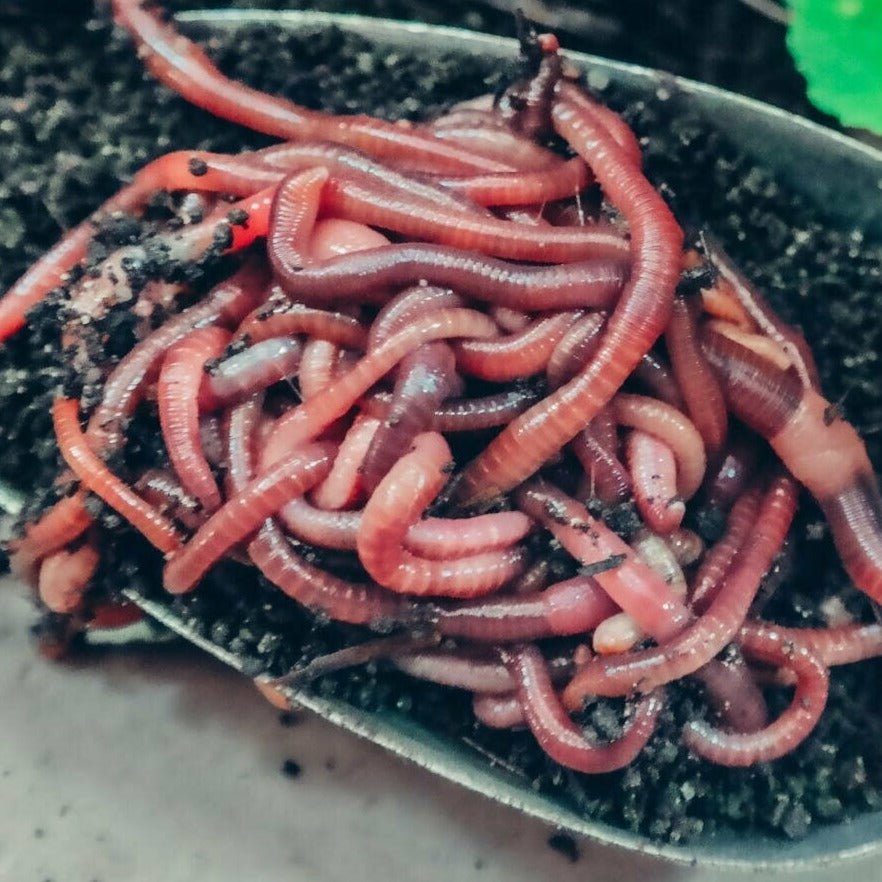Red worms: A guide to their life cycle
Red worms: A guide to their life cycle
Blog Article
Using Red Wigglers for Effective Organic Garbage Disposal
These worms not just enhance waste decomposition however additionally produce beneficial worm castings, which can dramatically enhance dirt wellness. Comprehending the subtleties of establishing up a successful worm container and maintaining an optimal habitat is vital for maximizing their advantages.
Benefits of Utilizing Red Wigglers
Among one of the most engaging benefits of using red wigglers for organic waste disposal is their impressive performance in composting. These worms, scientifically called Eisenia fetida, are especially adjusted for breaking down natural products, allowing them to process waste as much as two times their body weight every day. This fast decay not just increases the composting procedure yet also produces nutrient-rich worm spreadings that significantly enhance dirt high quality.
In addition, red wigglers add to a decrease in land fill waste. By drawing away organic products from land fills, they assist decrease methane discharges-- a powerful greenhouse gas. This eco-friendly advantage is vital in the battle versus environment adjustment.
In addition, red wigglers are low-maintenance and can flourish in various atmospheres, making them accessible for both beginner and seasoned composters. Their capability to reproduce quickly makes sure a steady population, assisting in ongoing waste processing.
Setting Up Your Worm Bin
Producing an effective worm bin is crucial for optimizing the advantages of composting with red wigglers. The initial step is picking a proper container. A bin made of plastic or wood, with a capability of 10 to 20 gallons, is optimal. Guarantee the container has appropriate drainage openings to avoid excess wetness, as red wigglers thrive in a moist yet not soggy atmosphere.
(Granite Falls Worm Farms)Following, prepare the bed linen material, which acts as the worms' habitat and food resource. Shredded newspaper, cardboard, and coconut coir are exceptional choices. Go for a bedding depth of about 4 to 6 inches. The bin should be placed in a dark, temperature-controlled area, ideally in between 55 ° F and 77 ° F, to preserve worm task.
Once the container is established, introduce the red wigglers, allowing them to acclimate to their new environment. It's crucial to keep track of dampness degrees and temperature level routinely. A well-maintained bin will not only support the wellness of the worms but additionally help with effective disintegration of natural waste. By complying with these standards, you can create a successful ecosystem that adds to lasting waste administration.
(red wiggler composting worms)
What to Feed Red Wigglers
An understanding of the suitable diet plan for red wigglers is vital for keeping a healthy worm population and enhancing composting effectiveness. These products not only provide crucial nutrients yet also add to the wetness balance within the worm container.
It is vital to avoid particular foods that can harm the worm population. Red wigglers need to not be fed meat, milk items, oily foods, or refined products, as these can bring in insects and produce undesirable smells. red wigglers. Furthermore, citrus fruits and spicy foods ought to be minimized, as their acidity can be destructive to worms
Keeping track of the worm bin for food consumption rates will certainly help guarantee that red wigglers are receiving an ample diet plan while maintaining an efficient composting atmosphere. Proper feeding techniques are crucial for promoting a flourishing environment within the worm bin.
Maintaining Your Worm Habitat
A well-maintained worm environment is necessary for the wellness and efficiency of red wigglers. To ensure optimum conditions, it is crucial to monitor temperature, wetness, and oygenation within the worm container. Red wigglers flourish in a temperature series of 55 to 77 levels Fahrenheit. Exceeding this range can worry the worms, so it is essential to position the bin in a suitable area away from direct sunlight and severe temperature levels.
Dampness degrees ought to be maintained constant; the bed linens needs to be damp yet not soggy. A good guideline is to preserve wetness at around 70% to 80%. If the bedding becomes also damp, it can result in anaerobic problems that are harmful to the worms. Including completely dry carbon-rich materials, such as shredded paper or cardboard, can help absorb excess dampness.

Making Use Of Worm Castings in Horticulture
Rich in nutrients and advantageous microbes, worm spreadings function as a remarkable organic plant food for horticulture. Generated via the digestion procedures of red wigglers, these spreadings include a variety of important nutrients, including nitrogen, phosphorus, and potassium, which advertise robust plant development. Unlike artificial plant foods, worm castings use a slow-release device, ensuring that nutrients are readily available to plants over an extensive duration, therefore decreasing the risk of nutrient leaching and soil deficiency.
In enhancement to nutrient content, worm castings boost dirt structure and aeration, improving moisture retention and drain. The microbial life existing in worm castings assists to subdue virus and advertises a healthy dirt environment, additional benefiting plant health and wellness. When incorporated right into the soil or made use of as a leading dressing, worm spreadings can considerably enhance seed germination prices, origin growth, and overall plant vigor.
For optimal results, garden enthusiasts need to apply worm spreadings at a price of 1-2 inches per square foot, mixing them into the dirt or integrating them into potting mixes. In general, utilizing worm castings is an environment-friendly strategy to enhancing soil fertility and guaranteeing growing garden atmospheres.
Conclusion

Report this page